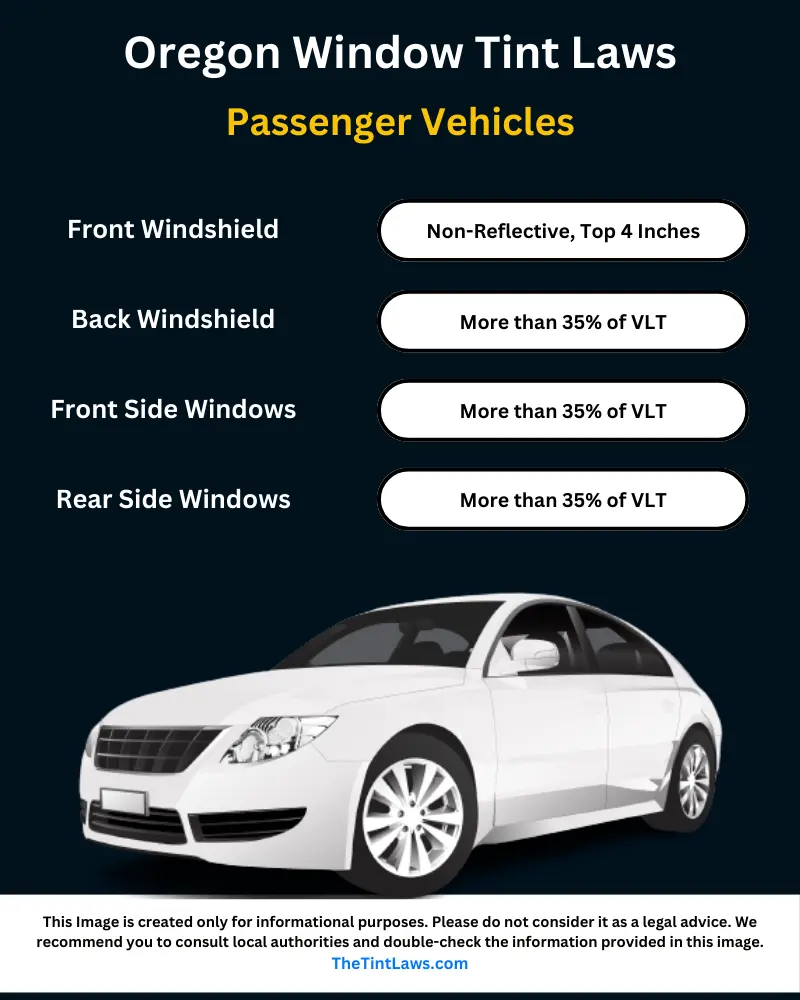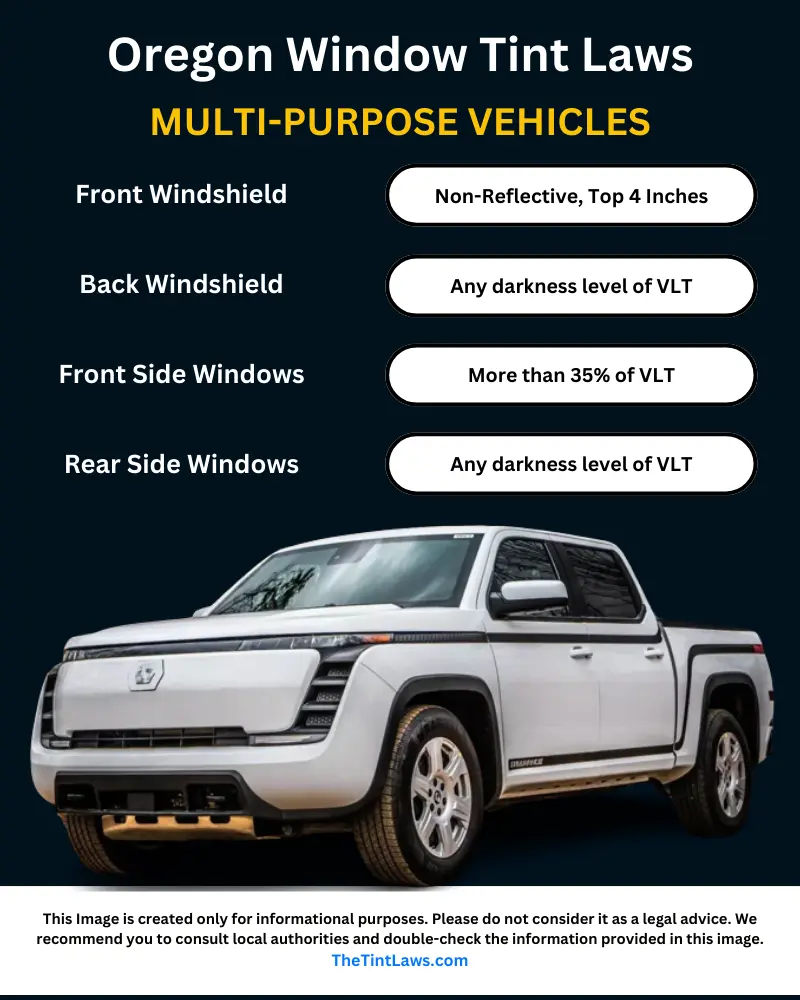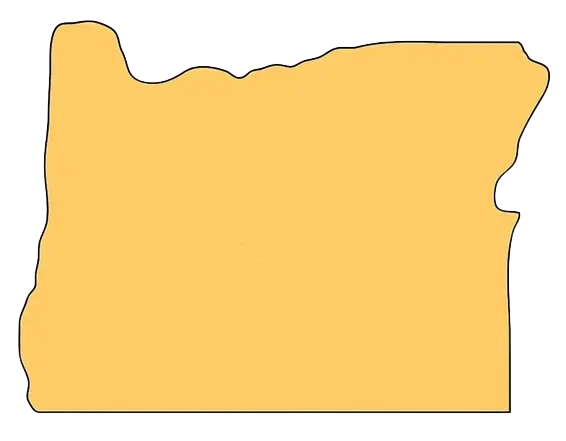Oregon tint laws were enacted in 2003. The darkest legal tint in Oregon is 35% of VLT for all windows except the windshield according to the window tint laws in Oregon State.
How tint percentage is measured by the Oregon Tint Laws?
Tint darkness level is measured by Visible Light Transmission (VLT), which indicates the percentage of light that passes through the film.
Here’s a complete breakdown of the Oregon legal tint limits for different types of vehicles.
Legal tint darkness for sedans:
- Windshield: Only non-reflective tint is allowed on the top 4 inches.
- Front side windows: More than 35% of VLT should be allowed.
- Backside windows: More than 35% of VLT should be allowed.
- Rear window: More than 35% of VLT should be allowed.

Legal tint darkness for SUV and Van:
- Windshield: Only non-reflective tint is allowed on the top 4 inches.
- Front side windows: More than 35% of VLT should be allowed.
- Backside windows: Any darkness level is permitted.
- Rear window: Any darkness level is permitted.

Important Note: It’s crucial to remember that these are the minimum VLT requirements. You can have a lighter tint (higher VLT percentage) as long as it meets the legal limit. However, anything darker than the specified VLT is considered illegal.
Also Read: California Tint Laws
Window tint reflection in Oregon:
Car window tinting laws in Oregon state allow a certain percentage of tint reflection for all types of vehicles.
Tint Reflection for sedans:
- Front Side windows: It should not be more than 13% reflective.
- Back Side windows: It should not be more than 13% reflective.
Tint Reflection for SUV and Van:
- Front Side windows: It should not be more than 13% reflective.
- Back Side windows: It should not be more than 13% reflective.
Oregon Window Tinting Rules and Regulations:
- Side mirrors: Both side mirrors are required in case of a tinted rear window.
- Restricted Colors: Amber, black, gold, red, and yellow color are illegal to use. Any other color can be used for tinting purposes by Oregon window tint laws.
- Certificates: A certificate showing the window tint installer’s name, and address along with the tint’s specifications must be provided by the installer.
- Stickers: No sticker is needed for legal tint identification.
- Penalties: A violation of Oregon window tint laws is a $360 fine.
- Medical tint exemptions: A doctor’s written statement may allow exceptions to the tint darkness requirements for medical reasons.
Tint laws reference: 2011 Oregon Revised Statutes, SECTION – 815.221 Tinting; authorized and prohibited materials; certificate.
Information about Oregon State
Oregon is a state located in the Pacific Northwest region of the United States. Oregon is bordered by Washington in the north, Idaho in the east, Nevada and California in the south, and the Pacific Ocean in the west.
Oregon is the 9th largest US state by land area and the 27th most populous state in the USA. The largest city in Oregon State is Portland.

Capital
Salem
Population
4,233,358 (2023)
Area
98,466 mi2 (254,806 km2)
Cities in Oregon State
Portland, Eugene, Salem, Gresham, Hillsboro, Beaverton, Bend, Medford, Springfield, Corvallis, Albany, Tigard, Keizer, Lake Oswego, Oregon City, Durham, McMinnville, Canby, Independence, Sherwood, Wilsonville, Newberg, Forest Grove, Ashland, Klamath Falls, Grants Pass, La Grande, Hermiston, Umatilla, Pendleton, Redmond, Prineville, Coburg, Milton-Freewater, Hood River, The Dalles, Ontario, Dallas, and St. Helens.
Counties in Oregon State
The State of Oregon is divided into 36 counties.
Baker, Benton, Clackamas, Clatsop, Columbia, Coos, Crook, Curry, Deschutes, Douglas, Gilliam, Grant, Harney, Hood River, Jackson, Jefferson, Josephine, Klamath, Lake, Lane, Lincoln, Linn, Malheur, Marion, Morrow, Multnomah, Polk, Sherman, Tillamook, Umatilla, Union, Wallowa, Wasco, Washington, Wheeler, and Yamhill.